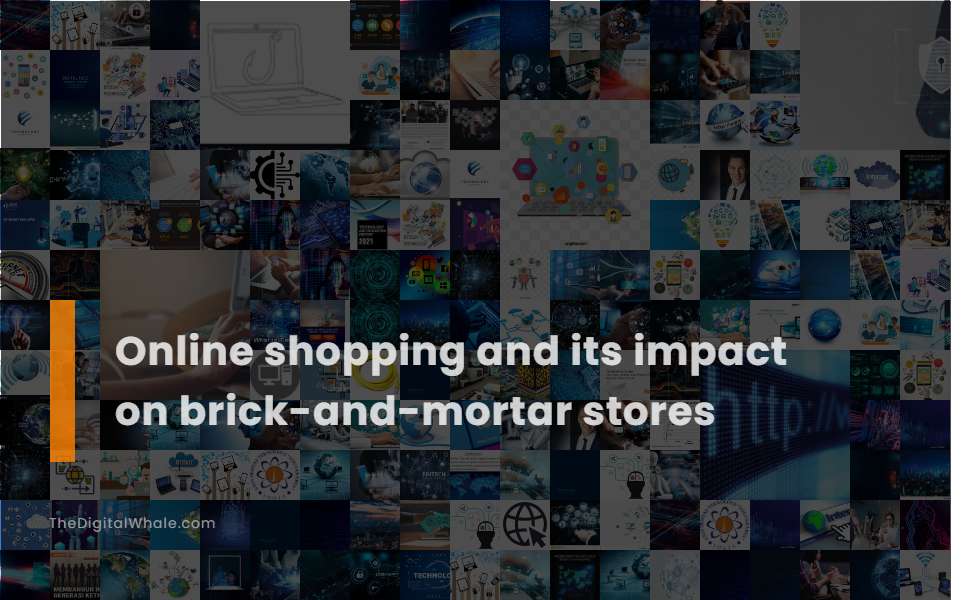Online Shopping and Its Impact On Brick-And-Mortar Stores
How has the retail industry evolved over the years? 1. What are some benefits of online shopping for retailers? Let's find out more about Online Shopping and Its Impact On Brick-And-Mortar Stores.

Increased competition from online retailers leading to brick-and-mortar store closures and shifts in business models.
The rise of e-commerce has ushered in unprecedented competition for brick-and-mortar stores, leading to a decline in foot traffic and the need for retail space downsizing. As these traditional retailers strive to stay competitive, enhancing customer experience and integrating online channels have become essential strategies. According to Mastercard Services, this struggle has been profound, with many stores forced to close and only a minority managing to reclaim lost sales through online platforms. To combat this, brick-and-mortar retailers are employing various tactics, such as price reductions, expanded product selections, and loyalty programs. The impact of eCommerce on these stores is also reshaping business models, making the adoption of eCommerce and omnichannel strategies crucial for survival and success. With the continuous growth of online shopping, it is imperative for retailers to adapt dynamically to the shifts in consumer behavior.
Brick-and-mortar stores adapting by creating online presences and omnichannel strategies.
Brick-and-Mortar stores must adapt to the rise of e-commerce by creating online presences, utilizing social media, and implementing omnichannel strategies to deliver an outstanding customer experience across all channels. This includes using technologies like chatbots and data analytics to enhance the shopping experience. Moreover, brick-and-mortar stores can benefit from e-commerce by leveraging omni-channel experiences, such as click-and-collect services, to combine the convenience of online shopping with the sensory experience of physical stores. By doing so, they can solidify brand loyalties and attract more in-store shoppers. For more insights on how brick-and-mortar stores can benefit from e-commerce, visit AFEUSA and explore their dedicated section on this evolving trend.
Online retailers opening physical stores to enhance customer experience and leverage traditional retail advantages.
Online retailers are increasingly opening physical stores to enrich the customer experience, cultivate a robust brand image, and capitalize on traditional retail advantages. Strategies like webrooming, click-and-collect services, and showrooming not only help boost in-store sales but also amplify online transactions. Physical stores serve as a vital platform for customer engagement, enabling brands to strengthen awareness and collect invaluable customer feedback. Most importantly, these tangible locations allow consumers to interact directly with products, enhancing their overall shopping journey. For a deeper exploration of this trend, visit Digital Authority for insights into combining the benefits of online and offline retail strategies.
Physical stores offering unique, immersive shopping experiences that online stores cannot replicate.
Physical stores are adapting to the rise of e-commerce by offering unique, immersive shopping experiences that online stores cannot replicate. These experiences include interactive trial zones, personalized digital platforms, and the innovative use of technology such as augmented reality and touch-screen mirrors to enhance customer engagement and satisfaction. Brick-and-mortar stores remain vital by providing in-person shopping experiences, instant gratification, and strong customer relationships, which are difficult to replicate online. By integrating Omnichannel Retailing strategies, they successfully combine the benefits of online and offline shopping, ensuring their continued relevance in the digital age.
Majority of U.S. retail sales still occurring in physical stores (83.7%).
Despite the growth of E-commerce, the majority of U.S. retail sales, forecasted at 83.8% in 2024, still occur in physical or brick-and-mortar stores. This trend underscores the enduring importance of traditional retail environments even as digital platforms continue to expand and evolve.
Related:
What are the implications of streaming services on the concentration of digital music sales? streaming services have had an effect on music piracy rates in the past couple of years. Let's find out more about The Effect of Streaming Services On the Music Industry.
Consumers, including Gen Z, preferring in-person shopping for a significant portion of their purchases.
Despite the rise of e-commerce, a significant portion of consumers, particularly Gen Z, prefer in-person shopping, with Gen Zers valuing the efficiency and unique experiences of in-store shopping. According to a recent survey, 53% of Gen Z and Millennial consumers continue to show a preference for physical stores when purchasing items, underlining their ongoing importance even in the digital age. This trend suggests that, while mobile applications and online channels are part of their shopping habits, the traditional retail environment retains its appeal. For further insights into these consumer preferences, a detailed study is available on LEK Consulting's website, which explores the reasons behind this inclination towards in-store shopping among these demographics.
Brick-and-mortar stores providing immediate product availability and in-store returns for online purchases.
Brick-and-mortar stores offer several advantages, including immediate product availability, eliminating wait times associated with online shopping, and the convenience of taking products home instantly. Additionally, they provide flexible pickup options for online purchases and hassle-free returns and exchanges, making the shopping experience more convenient and efficient.
Hybrid retail models (e.g., "click and mortars," "bricks and clicks") becoming more prevalent.
Hybrid retail models, such as "click and mortar" or "Bricks and Clicks," are becoming increasingly prevalent, allowing retailers to offer customers the benefits of both online transactions and traditional face-to-face service. This omnichannel approach enhances customer experience, increases flexibility, and makes retailers more competitive by integrating online and offline sales channels.
Physical stores serving as fulfillment centers and return drop-off locations for online orders.
In the dynamic world of retail, physical stores are evolving significantly by doubling as fulfillment centers and return drop-off points for online orders. By adopting strategies such as local pickup, delivery, and ship-from-store, retailers are enhancing customer experience while simultaneously reducing costs. These physical locations are now acting as pivotal hubs for managing pickups and returns, aiding in the lowering of labor, packaging, and shipping expenses. This transformation has significantly boosted the relevance of physical stores within the retail landscape, effectively merging traditional shopping experiences with the convenience of online commerce. For more insights on how this trend is revitalizing retail, visit Locally's perspective on the synergy between online shopping and brick-and-mortar stores.
In-store shopping resulting in higher average spend and more impulse buys compared to online shopping.
In-store shopping results in a higher average spend and more impulse buys compared to online shopping, with 80% of consumers shopping impulsively in brick-and-mortar stores. This behavior contrasts significantly with e-commerce transactions, where impulse buying accounts for only around 20% of purchases. For a deeper understanding of these trends, you can explore more about Impulse Buying Statistics on the Capital One Shopping website.
Related:
What are some potential negative consequences of excessive screen time for children? What is computer vision syndrome? Let's find out more about How Our Addiction To Screens Is Affecting Our Health.
